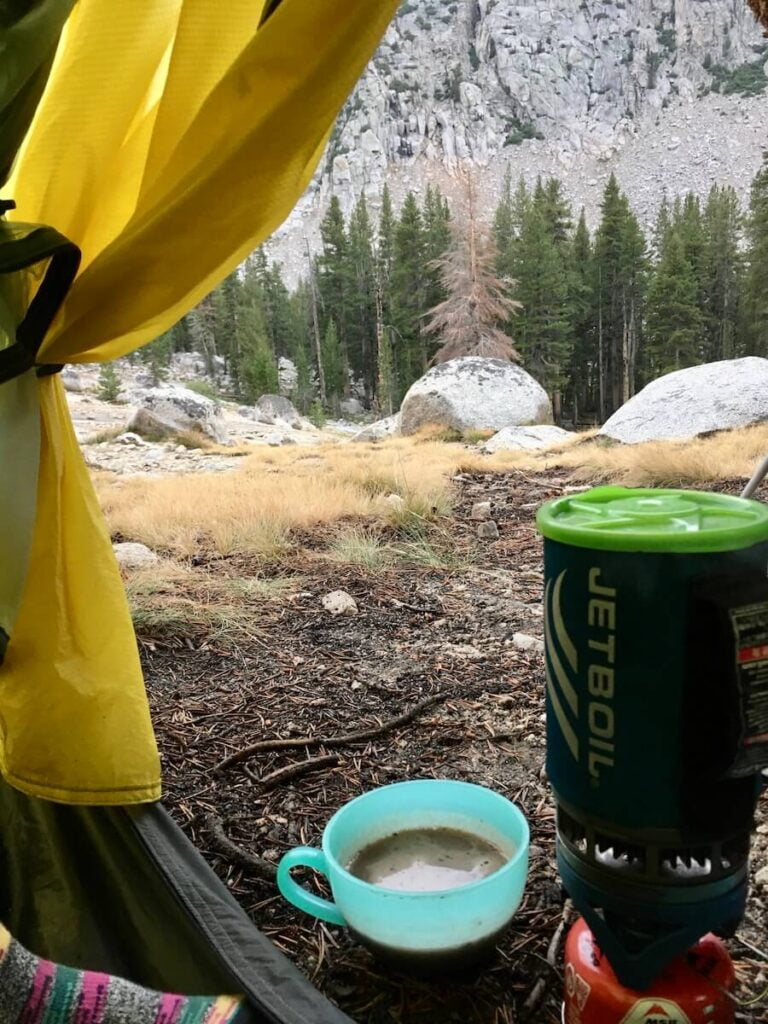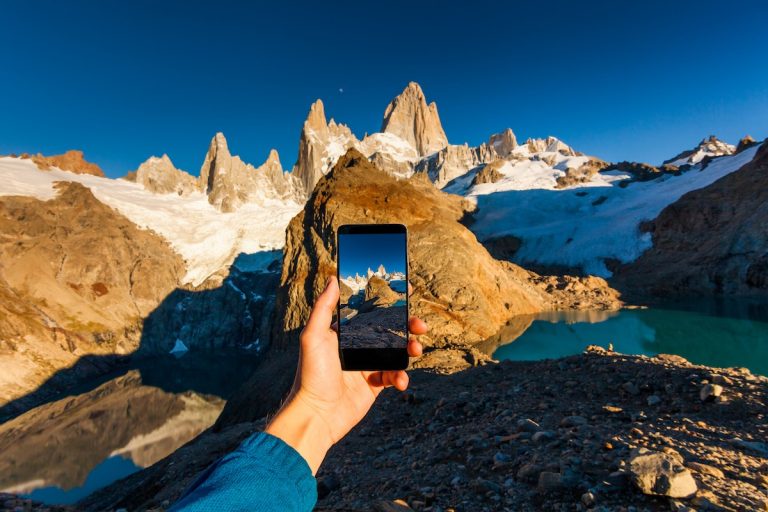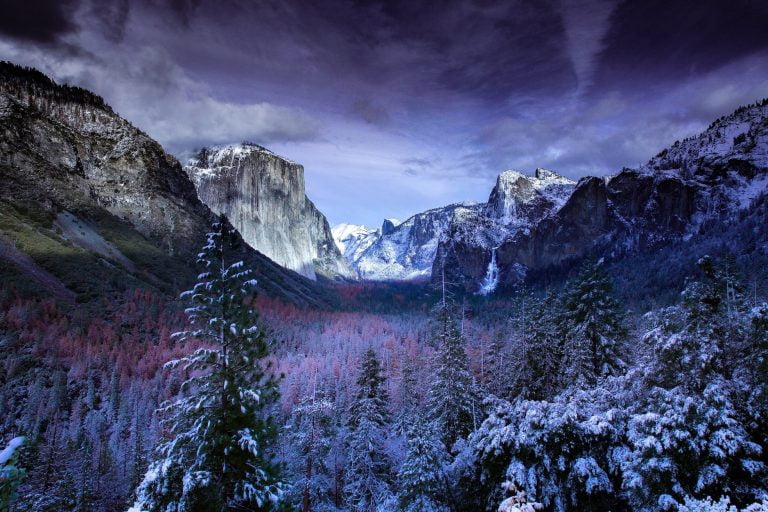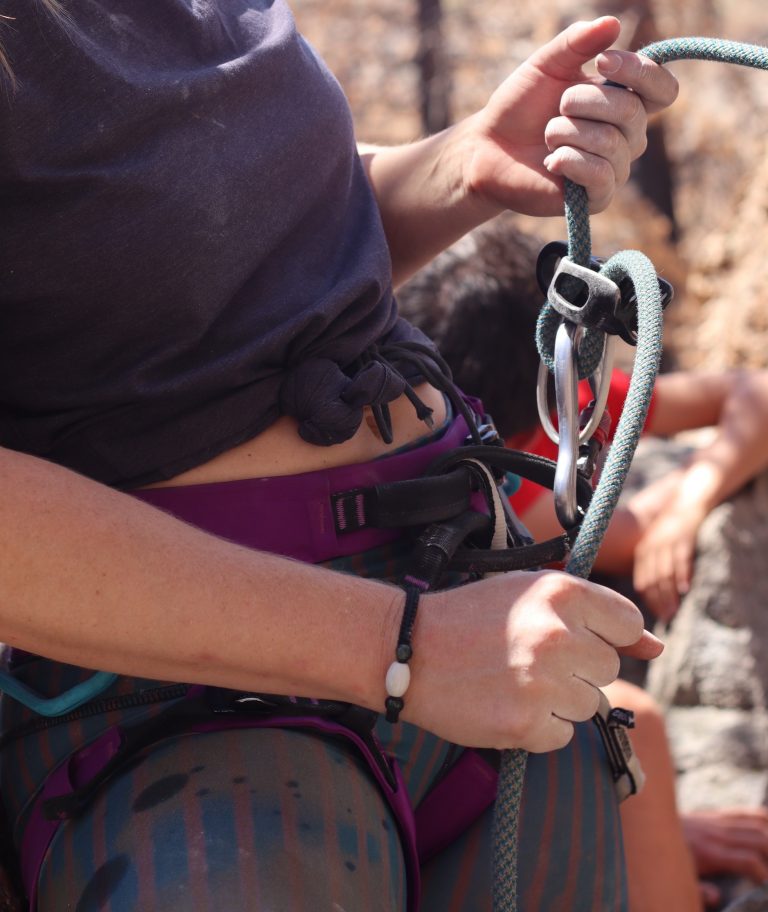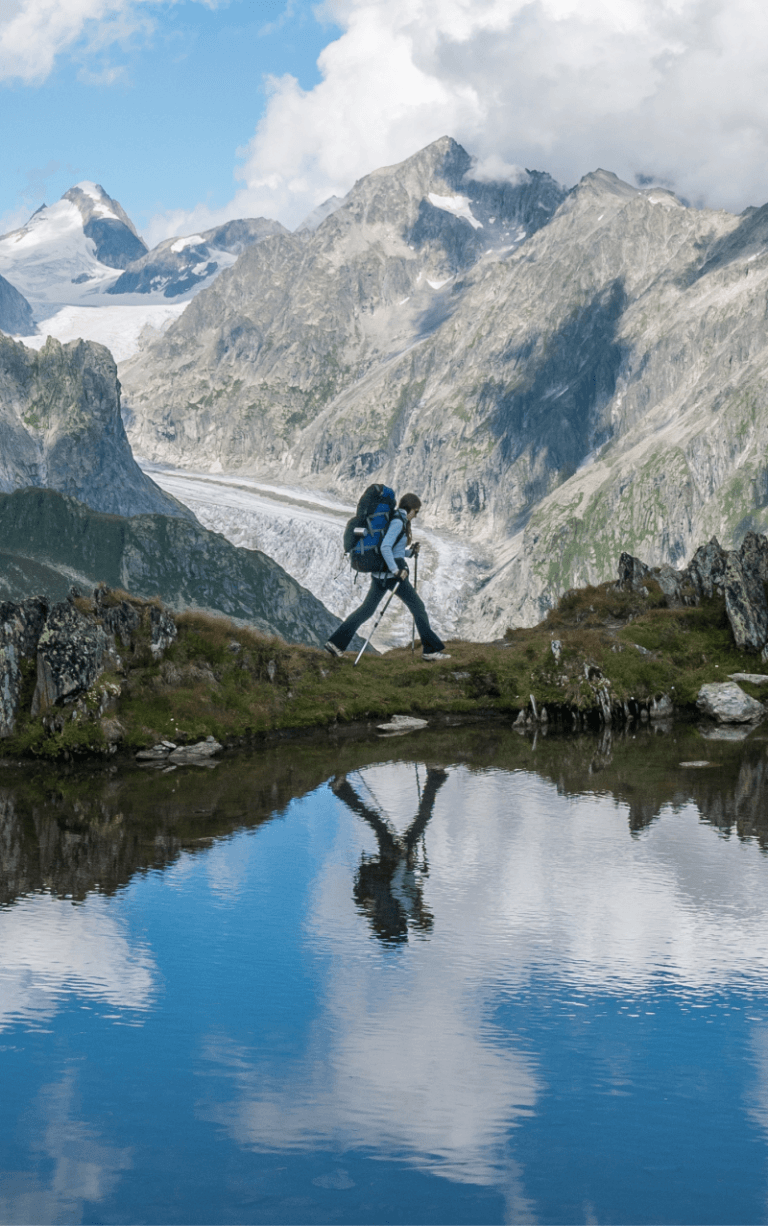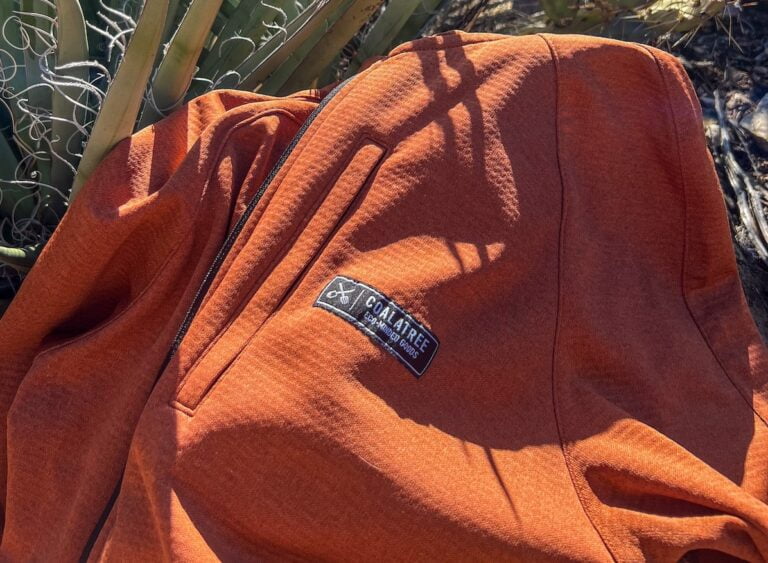How to Keep Your Tent Dry in Rain: 10 Proven Ways + Images!
Camping in the rain can either be miserable or cozy, depending on how you’ve prepared. This article features ten ways to keep your tent dry in the rain before, during, and after your trip outdoors.
Before You Go Camping
1. Waterproof your tent
The most important thing to keep your tent dry in the rain is waterproofing it. While most tents are water-resistant, they probably aren’t waterproof. So, you should prepare for heavy downpours by preparing your tent with a waterproof spray like Nikwax’s Tent & Gear spray.
Bonus: Nikwax is affordable (less than $20), sold at outdoor retailers like REI, and is an eco-friendly company.
2. Know your weather.
Before heading out, check the local forecast to see if you’ll be camping in the rain. And know how the weather behaves in different regions. In my experience in the rainforests of the Pacific Northwest, a constant drizzle is the norm. And in the California Sierras, even a 10-20% chance of precipitation on my Garmin InReach forecast almost guaranteed rain (or worse) that day. If hiking in alpine terrain, check out Mountain-Forecast.com (and note that the temperatures differ every 1,000 feet).
If I’m staying in a campsite with cell phone service or Wi-Fi, my go-to weather app is Weather Underground, which gives precipitation forecasts and the dewpoint, an essential marker of air moisture. If the dewpoint is 56°F (13°C) or higher, there’s a good chance you’ll wake up with a damp, dewy tent.
3. Bring a tarp
Before beginning a hike in British Columbia, Canada, I bought a tarp as extra protection for keeping my tent dry in the rain. As a Californian hiker, I have never used or seen a tarp used in the wilderness, but tarps are common among hikers in wetter regions.
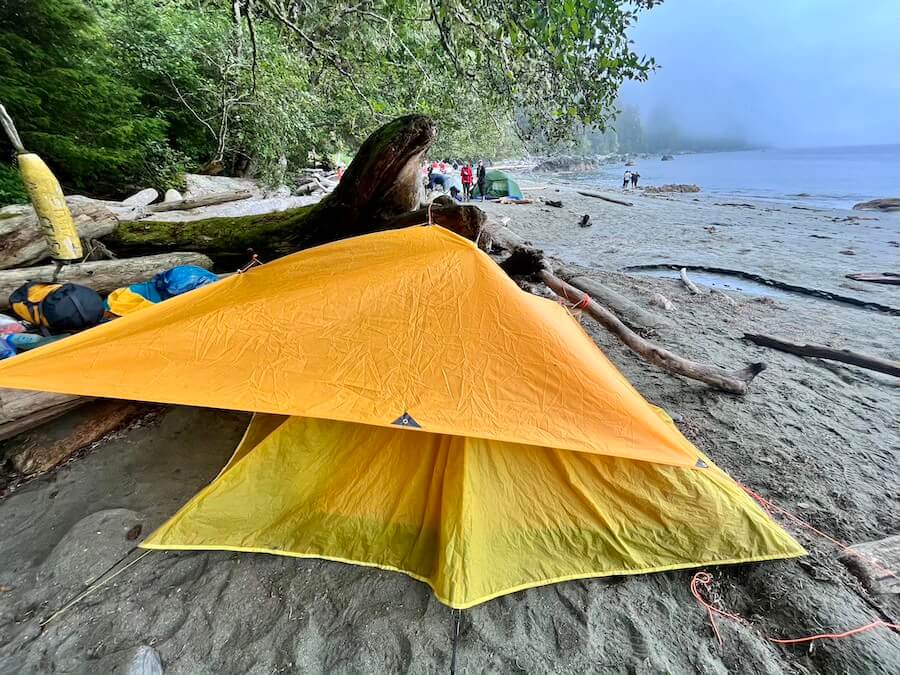
It became immediately clear why tarps are helpful in the rain. For instance, once I arrived at my campsite, and as it began to rain, I hung up my tarp to create a dry area to camp. As the rain fell, it was a joy to unpack my tent leisurely. I woke up to a wet tarp – but a dry tent. And it was a versatile purchase; even on sunny days, I stretched out the tarp to build a shade shelter.
If this is your first tarp, you’ll want to look at different sizes for your needs. For example, a solo backpacker will look for a 10-foot-long rectangular or square tarp, while a car camper may want a 12- by 16-foot-long tarp. You can buy a tarp for about $20 at home improvement stores. However, you’ll also need to buy two to three ropes and learn one or more knots.

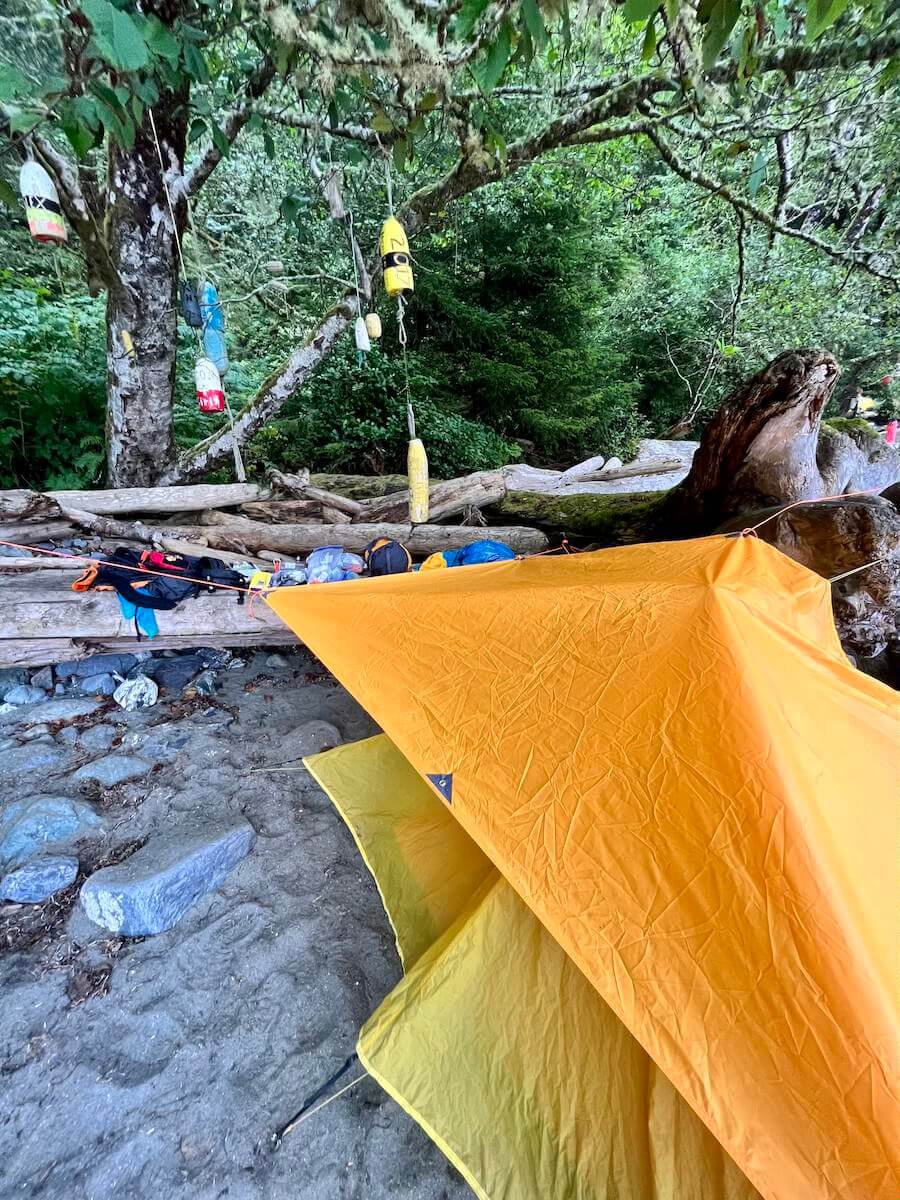
Finally, it’s good to practice at least a couple of times before your trip, like in a park or yard. There are a lot of technical videos on YouTube, but I found this one helpful: How to Properly Set Up a Tarp for Rain or Shade [Over a Picnic Table].
4. Use a tent footprint.
A ground cover, or tent “footprint,” is a surprisingly effective way to keep your tent dry inside. When it rains, put a footprint under your tent. Using a cover under your tent will keep your tent dry and warm and extend the life of your tent since rocky or uneven ground can damage your tent’s floor. Remember to buy a footprint smaller than your tent’s size since a larger ground cover may pool water directly underneath you. Tent footprints, like tarps, can be purchased for as little as $20.
5. Keep items dry inside your tent.
Creating a system to keep your clothes and other essential items dry is critical outdoors. For instance, I always keep my “camp clothes” (like pajamas) inside a separate waterproof bag so I can go to bed dry and warm, even after a day of hiking in the rain. I do the same with my electronic items, keeping them in a sealed plastic bag within the driest part of my bag. Sometimes I use a garbage bag as a liner or cover my backpack to keep everything dry inside.
I also keep my wet items outside the tent. Take off your wet clothes before entering the tent to keep the inside dry. During a rainy night, I’ll keep my damp things outside my tent and under my rain fly. This systematic separation of dry vs. wet items helps campers stay warm, protecting them from cold-weather concerns like hypothermia.
During Camping
6. Location, location, location.
When you arrive at your campsite, look for a spot to keep your tent dry. For example, I’ll walk around the grounds to look for flat, higher-elevation areas, ideally under trees. This way, there is less rain falling on my tent. And, if there is a downpour, a flat ground higher up will redirect any floodwater to flow downhill and away from the tent. You’ll always want to avoid a low-elevation area like a gully or the bottom of a valley.
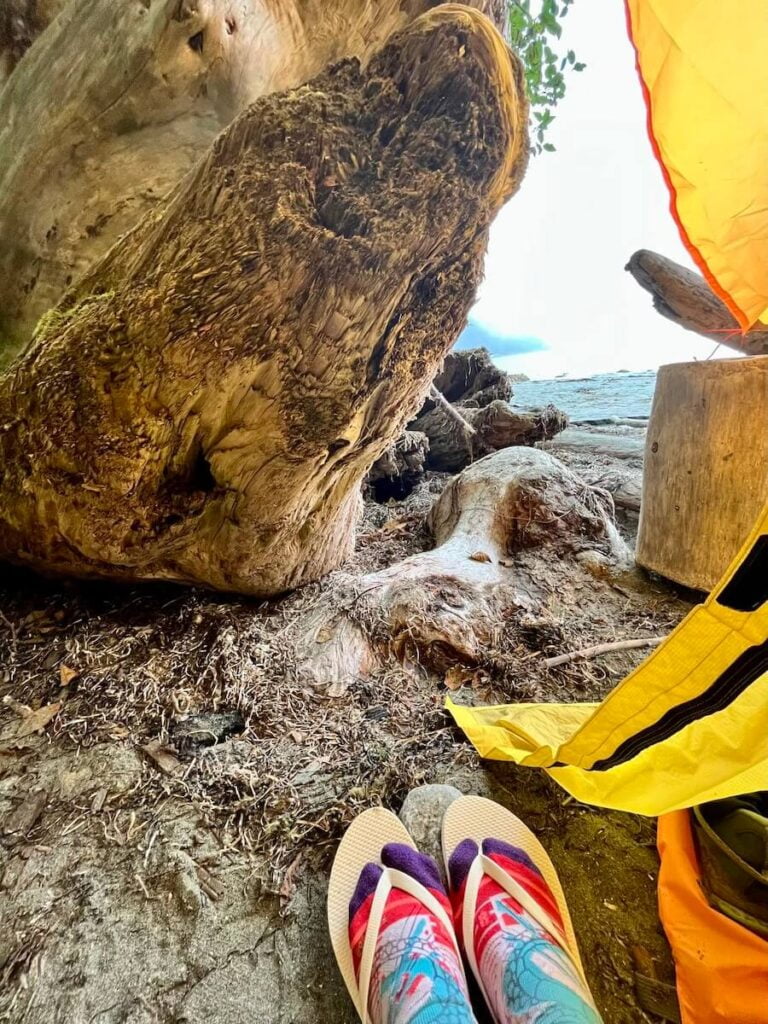
Additionally, secure and stake all sides of the tent, including all the guylines that pull the external tent walls away from the inner mesh tent. Even with a rain fly, tents need guylines to fully extend the tent’s frame, keeping the tent dry inside.
7. Wipe off your tent.
If you’re camping in the rain or need to dry off your tent, backpack, or shoes, use a Swedish dishcloth or Turkish towel. Most outdoors people will use microfiber towels like this one by REI, but microfiber is not sustainable. Swedish dishcloths are made of cellulose (wood pulp), and Turkish towels are made of cotton, and both materials are more sustainable than plastic-based cloth.
Swedish dishcloths are increasingly popular as they are reusable, biodegradable, and compostable (read this CNN.com feature for more information). On a rainy backpacking trip in Canada, I used Swedish dishcloths to keep my tent dry inside and outside. Plus, they were always well-designed with bright colors and patterns (I bought some of these designed by Indigenous Canadian artists for about US $5 each).
Another excellent option is Turkish towels. When driving to my site to car camp, I often pack my Turkish cotton towel, which is absorbent, dries quickly, and is lightweight (about 7 ounces or 198 grams). Turkish towels like this one on Amazon.com sell for about $20-$25 each and are available in multiple colors. Cotton may weigh more than microfiber, but it uses far less energy to produce, making it more eco-friendly.
8. Take a sun break to dry off your tent.
If you’re camping in the rain or wake up in a wet tent, you may not have time to dry off your tent after taking down your site, so you should be creative about taking sunshine breaks to dry off your tent.
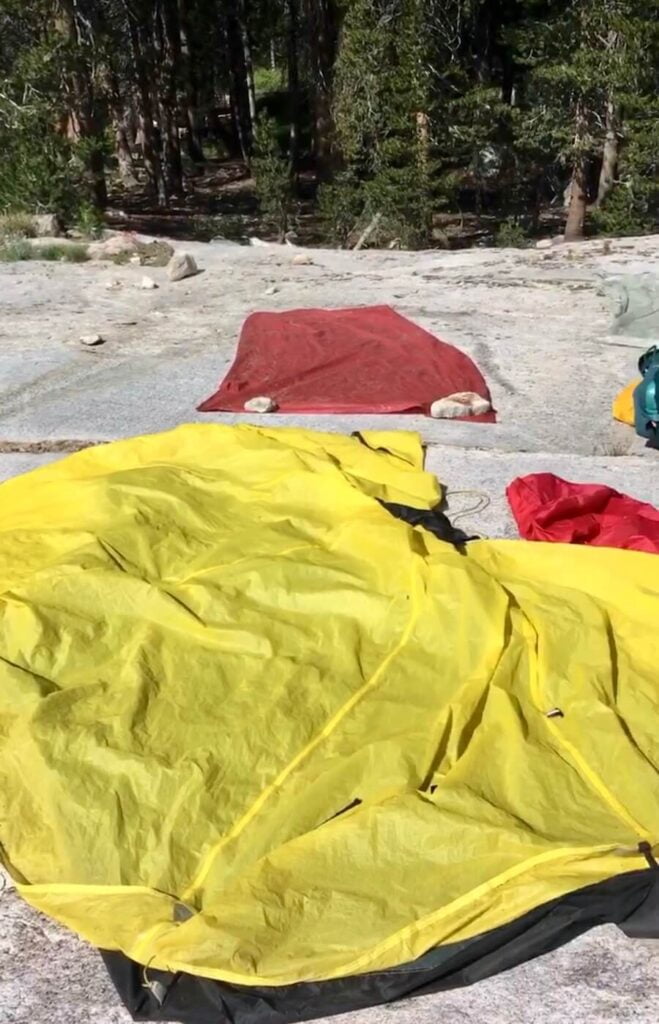
Sometimes I need to get started early on a long day of hiking. On those days, I will quickly wipe off and pack away my damp tent. However, during a sunny mid-morning break for snacks or to fill water, I will take out my wet items, spread them on a rock, and wait for 20 minutes. Alternately, I’d lay out my tent in the afternoon sunshine after arriving home. This sunshine break has greatly improved several damp, cold mornings.
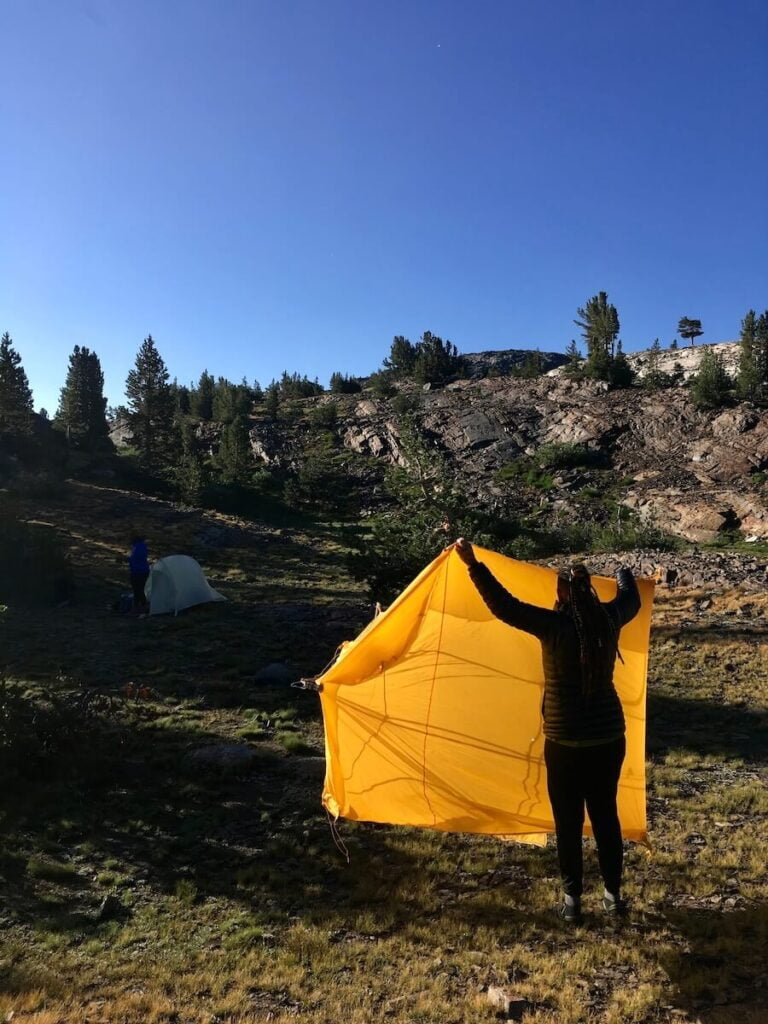
After Camping
9. Lay out your tent.
If you’re driving back from the campground, you can lay out your tent in the backseat or trunk of the car. To keep the rest of your bags dry, you may choose to lay a towel or tablecloth between the tent and other items. Make sure the tent is as fully stretched out as possible. Most or all of your tent should be dry when you’re home.
If you’re traveling or backpacking, you may choose to lay out your tent when you get home on a large open space like a yard or patio.
Other Considerations
10. Consider sustainable tent textiles.
First, the bad news. Most tents and tarps are made of nylon, with a large carbon footprint (about 350% greater than cotton). So, sustainability is a challenge for camping. However, gear companies like Z-Packs and Hyperlite manufacture their shelters with waterproof Dyneema® fabric, which is stronger and more sustainable than traditional nylon. Their gear may cost more but may last for more years. And if you don’t have $600-$1,000 for a tent, another sustainable practice is to buy used gear, like these tents on GearTrade.com.
Quick Questions
Why Does My Tent Leak When It Rains?
If your tent leaks when it rains, you may need to adjust your rain fly, so it covers your tent. Alternately, you may need to replace your rain fly if it is too small for your tent.
What Do I Do In A Tent During A Thunderstorm?
A thunderstorm can be dangerous, particularly if there is lightning. Sit in a crouched, ball-like position on top of a dry air mattress in the center of the tent. Stay as far away from the frame and walls as possible.
How Long Can I Leave A Tent Wet?
You can pack a wet tent, but you should unpack it and let it dry out within a day or two. After a couple of days, your tent may gather mildew.
Summary
In summary, we’ve listed ten few ways to stay drier when you’re camping outdoors in the rain. We hope your skies will be clear and precipitation-free, but if you’re caught in a drizzle, follow a few of these tips for happier camping.
